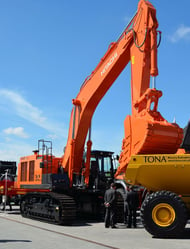Types of Depreciation for Machinery and Equipment

Under the Cost Approach methodology of appraising machinery & equipment, there are three components to measuring depreciation. They are listed and defined as follows:
- Physical deterioration is a form of depreciation where the loss in value or usefulness of a property is due to the use-up or expiration of its useful life caused by wear and tear, deterioration, exposure to various elements, physical stresses, and similar factors.
- Functional obsolescence is a form of depreciation in which the loss in value or usefulness of a property is caused by inefficiencies or inadequacies of the property itself when compared to a more efficient or less costly replacement property that new technology has developed. Symptoms suggesting the presence of functional obsolescence are excess operating cost, excess construction (excess capital cost), over-capacity, inadequacy, lack of utility, or similar conditions.
- Economic obsolescence (sometimes called “external obsolescence”) is a form of depreciation where the loss in value of a property is caused by factors external to the property. These may include such things as the economics of the industry; availability of financing; loss of material and/or labor sources; the passage of new legislation; changes in ordinances; increased cost of raw materials, labor, or utilities (without an offsetting increase in product price); reduced demand for the product; increased competition; inflation or high-interest rates; or similar factors.
An accredited machinery & equipment appraiser determines reasonable levels for these types of depreciation by researching the marketplace and obtaining opinions and data from third-party sources who buy, sell, and utilize these types of assets. How different types of equipment typically depreciate in the market will provide an estimate that is inclusive of all three of the above variables and will tie directly to the current fair market value of the machinery.
This is commonly referred to as a “direct market-derived approach” to understanding depreciation, in tune with the reality of how they are valued over time and how long they can reasonably be expected to operate effectively before needing major rebuilds/overhauls or retirement from service entirely.
It is important to understand these factors and take them into account as part of a complete market analysis which will also include reviewing comparable sales of the equipment being appraised. Market comparable data can oftentimes be limited or inconsistent across different sources and a balanced understanding of market depreciation can complement this data and provide reasonableness checks to comparable sales.
This methodology is very different than how accountants manage depreciation on a company’s books, as described below.
Accounting Methodology of Determining Depreciation
When it comes to capitalized machinery & equipment on a company’s books, accountants treat depreciation according to accepted principles. One such principle is the Modified Accelerated Cost Recovery System (MACRS). This method is based around a uniform, straight-line reduction in value, or depreciation, which starts with the acquisition price of the equipment and amortizes that price, or initial value, equally over a standardized term, usually five to seven years. The endpoint of the depreciation is typically zero.
In summary, it is important to obtain an accredited machinery & equipment appraisal report with a signed certification that represents the true market value for your tangible assets.
Recent Posts


